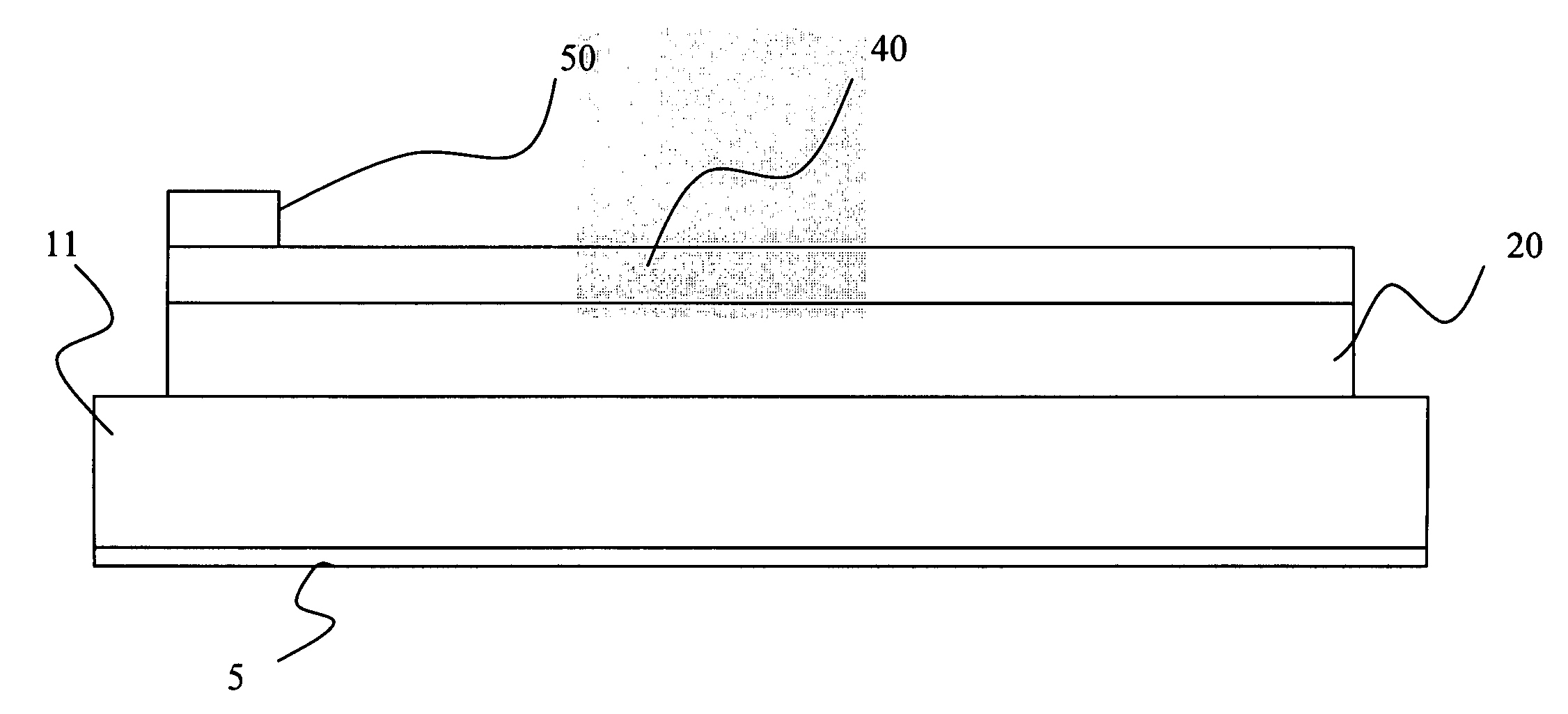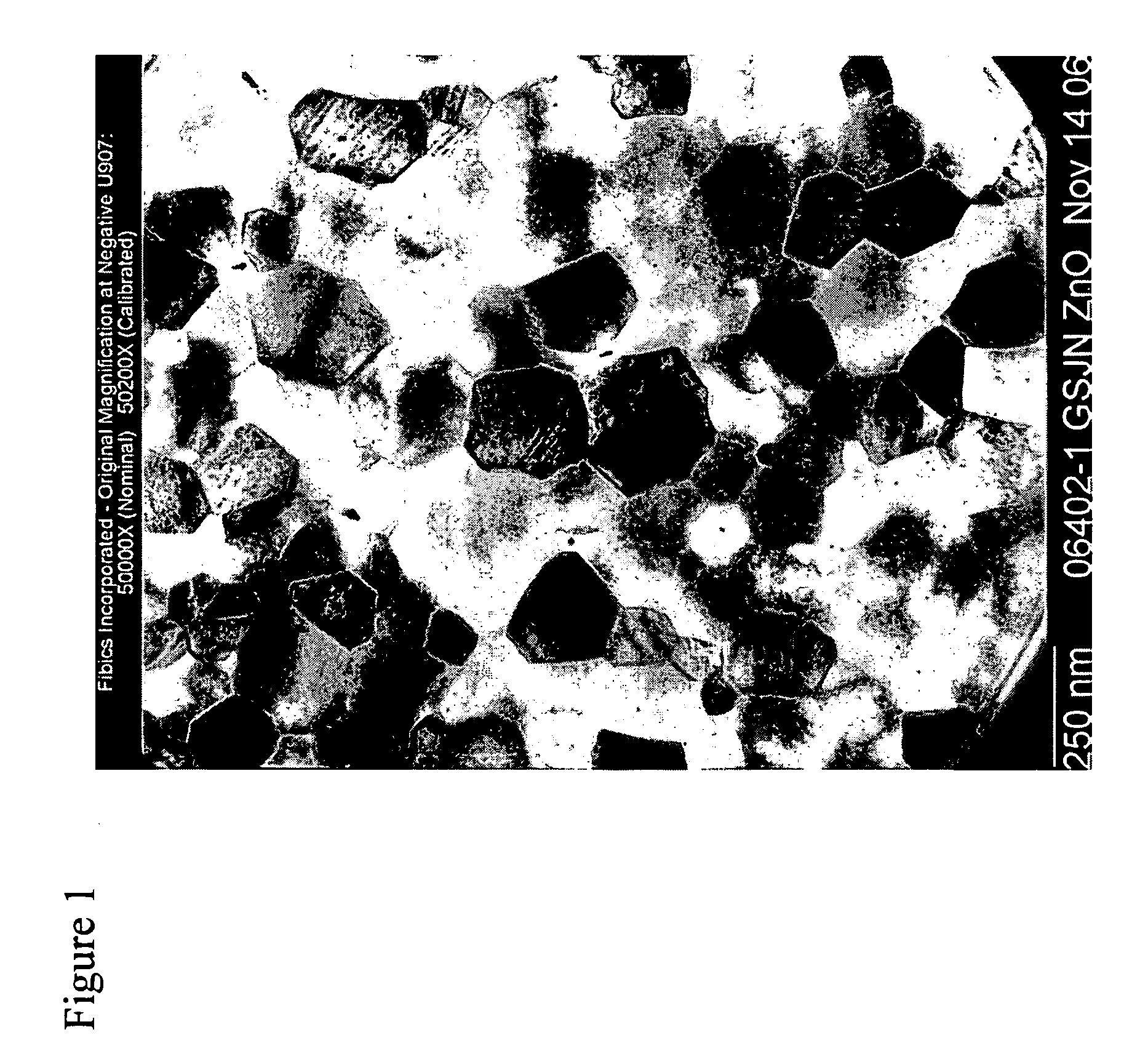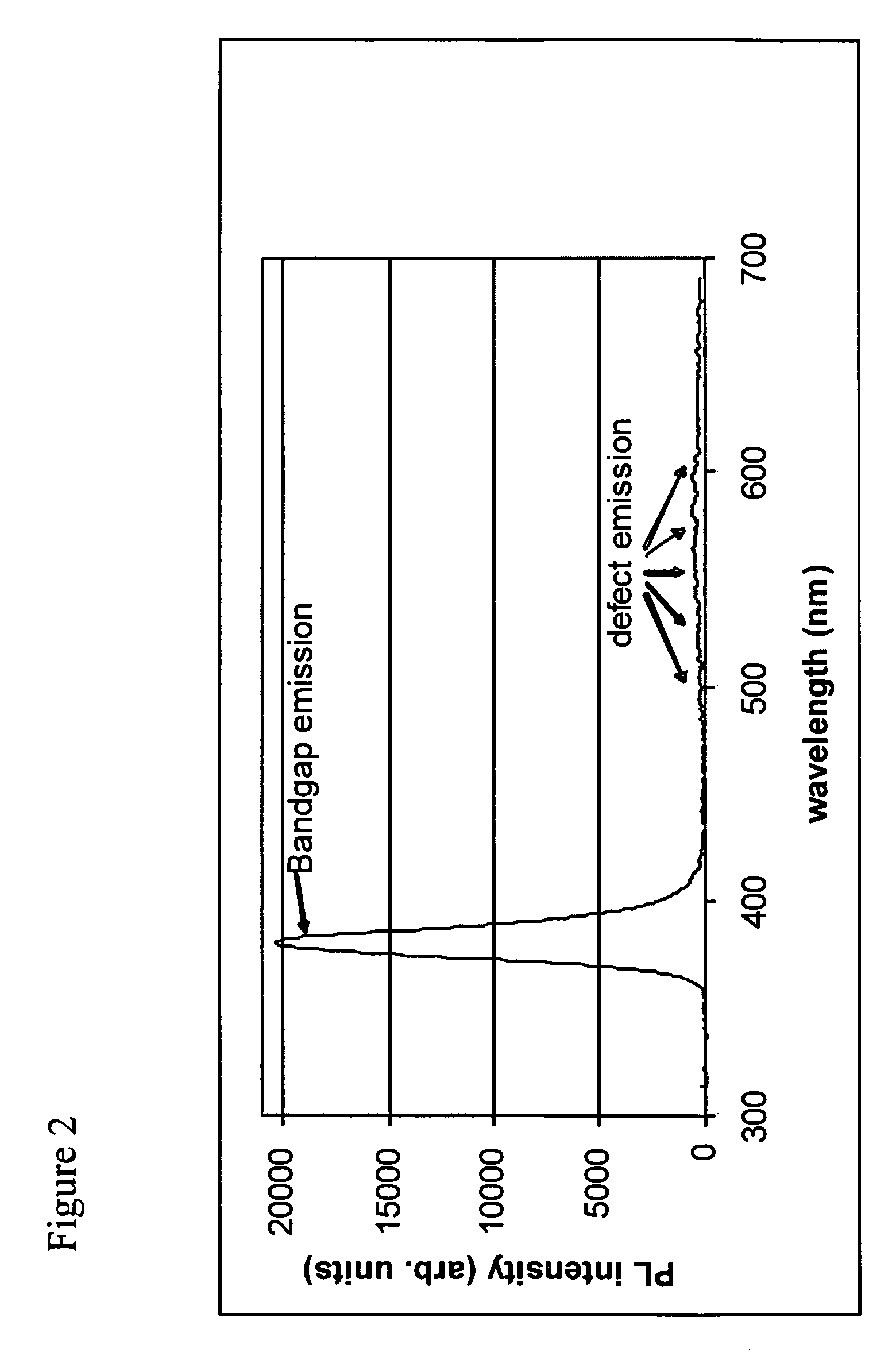Light emitting devices with a zinc oxide thin film structure
a thin film, zinc oxide technology, applied in semiconductor devices, basic electric elements, electric devices, etc., can solve the problems of hampered development of zno light emitters, unsuitable free-exciton light emission, and high price of refined form of indium, so as to minimize the concentration of native intra-crystal defects, promote grain growth, and increase the probability of free excitons
- Summary
- Abstract
- Description
- Claims
- Application Information
AI Technical Summary
Benefits of technology
Problems solved by technology
Method used
Image
Examples
Embodiment Construction
[0033]The present invention relates to direct-bandgap, semiconductor-material, thin films, such as zinc oxide (ZnO) or ZnO alloyed, e.g. with beryllium, cadmium and magnesium, for use in producing efficient electro-luminescent devices by enhancing the intensity of the bandgap light emission compared to the deep level (defect) light emission typically observed to be dominant in most direct-bandgap semiconductor devices, by providing a dopant with high concentrations of free-exciton binding centers. Specifically, the present invention is achieved by using process conditions for simultaneously satisfying all of the following materials requirements during fabrication of the electro-luminescent device or the optically active layer:
[0034](1) minimizing the concentration of point defects within the direct-bandgap, semiconductor material, e.g. ZnO, optically active layer (film), comprising a single crystal or polycrystalline grains, in particular the native defects involving vacancies and i...
PUM
 Login to View More
Login to View More Abstract
Description
Claims
Application Information
 Login to View More
Login to View More - R&D
- Intellectual Property
- Life Sciences
- Materials
- Tech Scout
- Unparalleled Data Quality
- Higher Quality Content
- 60% Fewer Hallucinations
Browse by: Latest US Patents, China's latest patents, Technical Efficacy Thesaurus, Application Domain, Technology Topic, Popular Technical Reports.
© 2025 PatSnap. All rights reserved.Legal|Privacy policy|Modern Slavery Act Transparency Statement|Sitemap|About US| Contact US: help@patsnap.com



